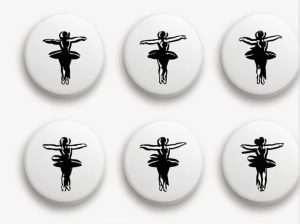Vaslav Nijinsky is widely regarded as one of the greatest ballet dancers of all time. His artistry revolutionized the world of dance blending technical brilliance with deep emotional expression. Nijinsky was not just a performer but also a visionary choreographer whose work challenged traditional ballet norms.
This topic explores Nijinsky’s artistry his contributions to ballet and his lasting impact on the world of dance.
1. Who Was Vaslav Nijinsky?
Vaslav Nijinsky (1889-1950) was a Russian ballet dancer and choreographer of Polish descent. He gained international fame as a principal dancer of the Ballets Russes a groundbreaking dance company founded by Sergei Diaghilev.
Nijinsky’s performances were known for their extraordinary leaps precise technique and expressive interpretations. Despite a short career his influence on modern ballet remains profound.
2. Nijinsky as a Ballet Dancer
Unparalleled Technique and Athleticism
Nijinsky was celebrated for his gravity-defying jumps and ability to remain suspended in the air longer than seemed humanly possible. His movements were exceptionally controlled displaying a rare combination of strength and grace.
Emotional Expression in Dance
Beyond technique Nijinsky’s ability to convey deep emotion set him apart. His performances in ballets like Giselle and Le Spectre de la Rose mesmerized audiences as he embodied characters with haunting intensity.
Notable Roles
Some of Nijinsky’s most famous roles include:
- The Spirit of the Rose (Le Spectre de la Rose) – A dreamlike portrayal of an ethereal presence.
- The Golden Slave (Scheherazade) – A sensual powerful performance that shocked audiences with its intensity.
- The Faun (L’Après-midi d’un faune) – A groundbreaking role that showcased his unique choreographic style.
3. Nijinsky as a Choreographer
Although Nijinsky is best known as a dancer his choreographic works were equally revolutionary. He broke away from the fluidity of traditional ballet introducing angular movements unconventional poses and strong rhythmic patterns.
Choreographic Innovations
- Modern angular movement – His choreography used sharp static poses rather than continuous flow.
- New interpretations of music – Nijinsky’s work reflected the rhythm of the music rather than relying on traditional ballet technique.
- Controversial themes – His ballets often explored taboo subjects and psychological depth.
Famous Choreographed Works
1. L’Après-midi d’un faune (The Afternoon of a Faun) (1912)
This ballet set to Claude Debussy’s music featured stiff two-dimensional movements inspired by ancient Greek art. The story follows a faun interacting with a group of nymphs ending in a highly controversial final pose that scandalized audiences.
2. Le Sacre du Printemps (The Rite of Spring) (1913)
One of the most revolutionary ballets in history The Rite of Spring set to Igor Stravinsky’s music depicted pagan rituals and human sacrifice. The angular primitive choreography shocked audiences and led to a riot at its premiere.
3. Jeux (1913)
A more playful ballet that explored themes of flirtation and relationships Jeux was Nijinsky’s attempt to experiment with modern movement and abstract storytelling.
4. Nijinsky’s Artistic Influence
1. Breaking Ballet Norms
Nijinsky’s choreography marked a departure from classical ballet traditions. His works laid the groundwork for modern dance influencing later choreographers such as Martha Graham and Pina Bausch.
2. Psychological Depth in Dance
His performances introduced a deeper emotional and psychological intensity paving the way for more expressive and dramatic interpretations in ballet.
3. Inspiring Future Generations
Despite his short career Nijinsky remains a symbol of artistic innovation inspiring countless dancers choreographers and artists worldwide.
5. The Tragic End of His Career
At the height of his career Nijinsky’s mental health began to decline. He was diagnosed with schizophrenia which forced him to retire from dance in his early 30s. He spent much of his later life in psychiatric institutions.
Despite this tragic end Nijinsky’s legacy as a dancer and choreographer remains untouched. His diaries written during his years of illness offer a glimpse into his mind and have been widely studied for their artistic and philosophical insights.
Vaslav Nijinsky was more than just a ballet dancer—he was an artist who transformed the world of dance. His unparalleled technique expressive performances and groundbreaking choreography continue to shape modern ballet and contemporary dance.
Although his career was brief his influence remains strong proving that true artistry transcends time. Nijinsky’s work challenged traditions pushed boundaries and left a lasting impact on the world of performing arts.


